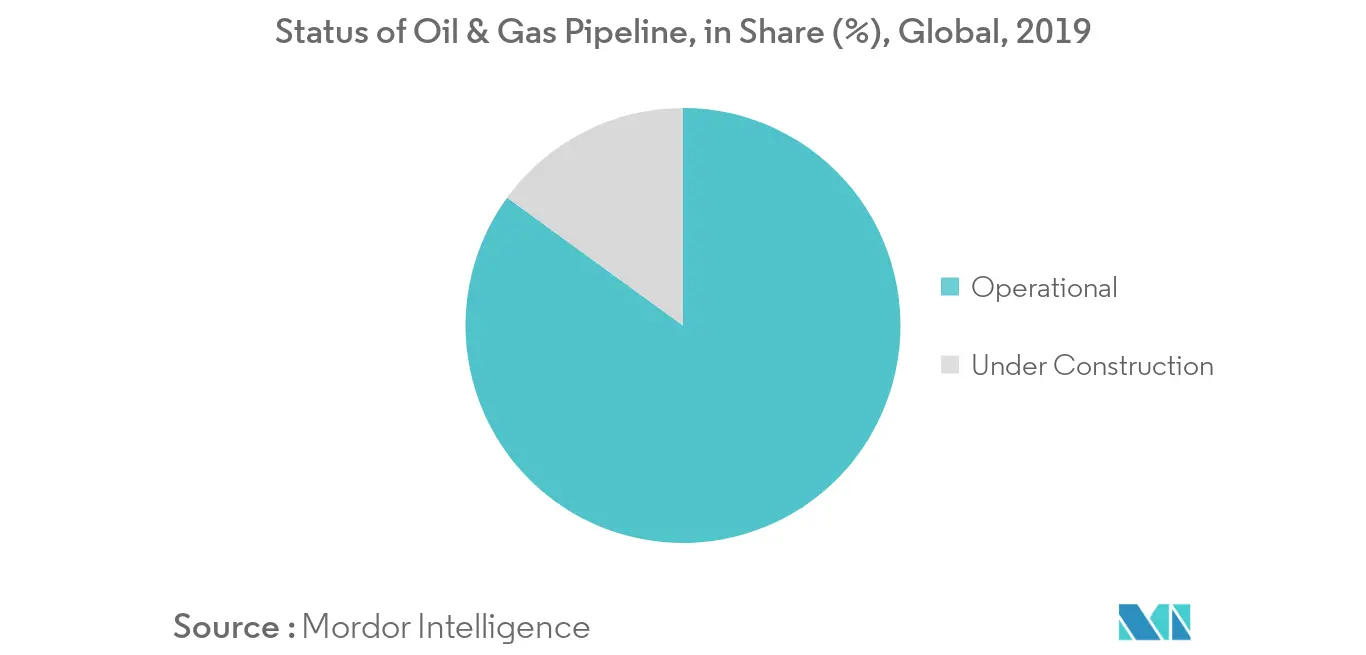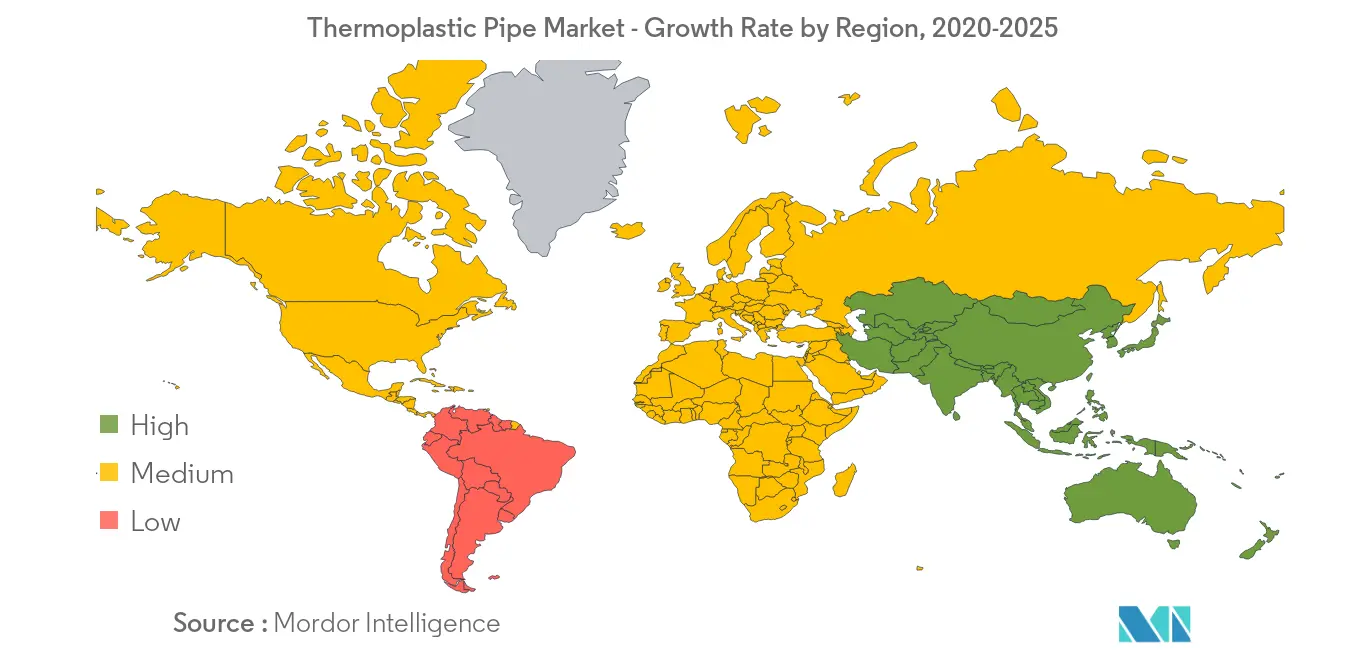Market Trends of Thermoplastic Pipe Industry
This section covers the major market trends shaping the Thermoplastic Pipe Market according to our research experts:
Oil & Gas Industry to Dominate the Market
- Oil & Gas sector includes transportation pipelines, domestic pipelines, flowlines, and several other pipelines. These metallic pipelines often need to be maintained to get rid of corrosion. Uses of thermoplastic is an alternative to the conventional pipe, which need not require any kind of maintenance. It can be rolled out to the operation site and can be easily installed. Moreover, the pipes have resistance to varying pressure up to 450 bar and temperature up to 105°C.
- Thermoplastic pipe as a gas pipeline under domestic uses is one of the prominent applications in the oil & gas sector. The pipelines can be installed at a faster rate, of an average speed of around 1000 meters per day, this indicates the faster installation of domestic gas and leads to a reduction of waiting time for the customers.
- As of 2018, there are over 1 million kilometers of pipelines in operation, and under construction, that needs maintenance at regular interval. Out of the total, approximately 0.14 million kilometers of pipelines are planned and under construction. With the installation and commissioning of these pipelines, the maintenance services of the pipes are expected to add up to the overall operating expense. Consideration of thermoplastic in the sector is expected to reduce the maintenance charges in the future.

Asia-Pacific to Dominate the Market
- With an increasing population in the region, the demand for water transport and energy demand is expected to increase during the forecast period. Water, an essential commodity, is mostly transported through PVC pipes, while oil & gas are mostly transported through polyethylene pipes.
- PVC is strong and lightweight, durable to weathering, rotting, chemical corrosion and abrasion, versatile, and easy to use, as it can be cut, shaped, bend, and joined in any style. Such characteristics make it an ideal option for many applications, such as water transportation.
- The global urban population has grown rapidly from 751 million in 1950 to 4.2 billion in 2018. Asia-Pacific, despite having a lower level of urbanization, the region is home to nearly 54% of the global population. Between the period 2018 and 2050, India and China are expected to account for nearly 30% of the global projected urban population. The increase in urbanization is expected to increase the demand for oil & gas and water transportation pipeline over upcoming years.


